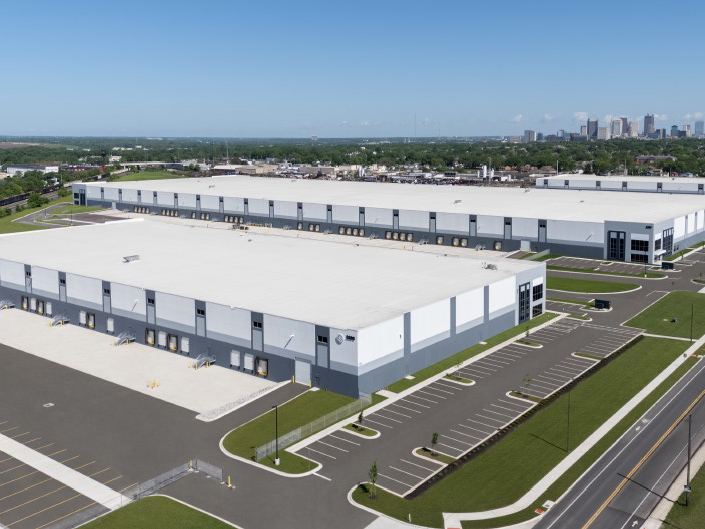Property Management Success: Powering Data Center Efficiency and Security
Insights on best practices for operating these in-demand, technically challenging facilities.

AlohaNAP, a multi-tenant data center in Kapolei, Hawaii. Hyperscale facilities and their hotel-style counterparts bring very different planning and energy requirements. Image courtesy of 1547 Critical Systems Realty
Over the past several years, the supply of, demand for and investment in data centers has increased dramatically. According to data from JLL’s North American Data Center Report, about 3,000 megawatts of data center capacity was available at the end of the first half, with 2,500 MW absorbed over the same period. Capital markets and developers remain engaged, despite high financing costs, as the sector generated more than $10 billion in transactions in the first half.
These trends are expected to continue, particularly as a growing number of data center customers utilize artificial intelligence. That brings demand for reliable, efficient, sustainably operated facilities.
Keep it cool
Uptime—the period of guaranteed operations and availability—is paramount in data center management, regardless of the facility’s size or location. The requirement goes hand in hand with sustainability commitments, as operators strive to couple optimized energy expenditures with strategies for efficiently cooling the facilities and their sensitive hardware.
“It’s a system of equations,” observed Ronald Davis, vice president of professional services at the Uptime Institute. “You have an efficiency equation, a sustainability equation and an availability equation.” These factors raise questions about cost and capacity, as data centers consume a great deal of energy and produce an immense amount of heat.
Consequently, a top priority of managers is the cooling solution, which demands constant evaluation and innovation. “Cooling is your biggest opportunity to improve efficiencies, but it’s also where you lose most of your efficiencies,” said Chris Napier, vice president of operations at CyrusOne. These considerations increase operational costs, and inefficient cooling can drastically hamper uptime.
As a result, this aspect of management necessitates a constant stream of reliable data about a facility’s thermal profile. Sean Farney, executive director of data center strategy and information at JLL, advises that the use of this information goes together with astute decision-making.
“(We can) turn temperatures up to reduce power consumption, making sure that the equipment is OK with higher heat, and can run as efficiently and not beyond recommendations from the manufacturer, or we can reduce water consumption,” Farney noted. What enables these decisions, he added, is information on temperature, humidity airflow and consumption.
READ ALSO: What 2023 Will Bring for Data Centers
That approach remains a top priority in the proptech realm. CyrusOne continuously evolves its tech stack and building management systems around thermal profiles, and monitors consumption at the level of individual cabinets. The firm uses data to curate its buildings and mechanical systems around a “hot-in, cold-out” configuration. Cold air is used to pressurize a balloon under perforated tiles that lie beneath the server cabinets.
“It’s a concert between the tech stack giving us feedback, our power management teams looking at utilizations and points within our facilities,” Napier reported.
In devising solutions such as CyrusOne’s, firms must also take into account how a facility’s size influences energy expenditure and capabilities. For instance, hyperscale facilities, which often host business-critical information and meet significant storage requirements, need energy distribution and planning that is vastly different from smaller, hotel-style colocation facilities. “You are looking at 5-megawatt vs. 5-kilowatt customers,” noted Julie Coates, vice president of lifecycle management at 1547 Critical Systems Realty, which develops and manages custom-built data centers.
Data centers that occupy space in office buildings may not offer the opportunity to be as efficient or as sustainable as a standalone facility operated by Google or Amazon. One facility that the company operates in Portland, Oregon, is housed in an office building built in 1913.
The firm opted to remove the boilers from its spaces, installing exchangers that use excess heat generated by the servers to heat adjacent offices. “It is very difficult to do a lot of energy efficiency and sustainability initiatives, and that was one of the things that we could do to make it more efficient. In the end, it’s all about creativity,” Coates emphasized.
Expecting the unexpected
Along with efficiency and sustainability-driven uptime, physical and virtual security is a top priority for data center managers. Containing both sensitive information from major companies and expensive hardware, the facilities are potential targets for all sorts of disruptions, from hackers and burglars to simple human error. For Davis, security is a “highly scripted” environment of polices, processes and procedures that go from the front desk to the server racks.
On the physical level, Farney likes to keep it simple, with “large gates, big walls, lots of cameras and a 24/7 guard force that keeps an eye on the facility and walks the grounds.” Davis extends this approach into facility interiors, with biometric security, badge identifications and room-specific PINs. “Every level has its own policy and process-guided access control,” he added.
Such considerations extend to the virtual realm of hardware and software. Davis cites a case where a technician with the best of intentions may use a jump drive that has not been appropriately secured against malware to install firmware updates. “Control over any memory device is very important,” he advised.
At the same time, security is also a matter of a site’s specific capabilities and layout. “It all goes back to knowing your customer base” at both the level of the facility and its contents, Coates noted.
“Not every building is going to have an anti-scale perimeter fence, not every building is going to have biometrics,” she added. Where the data itself is concerned, managers must consider the needs of tenants that require certifications, such as HIPPA or PCI. “You need to make sure that you are doing whatever you need to meet those compliance standards with that customer,” Coates said.
Still, many aspects of facility management and, in turn, the skills that make for effective managers, fall outside the realm of the predictable.
“The data suggests that human error is the leading cause of outages in the industry,” Davis said. Data center facility managers are valued by their ability to adapt to and correct mistakes at operations that have little margin for error, he added. As a result, humility—and a willingness to question and learn—are just as important to technical acumen, he added.
And Napier offered this advice: “When all lights are green, check and feel it yourself, and make sure that you agree.”










You must be logged in to post a comment.